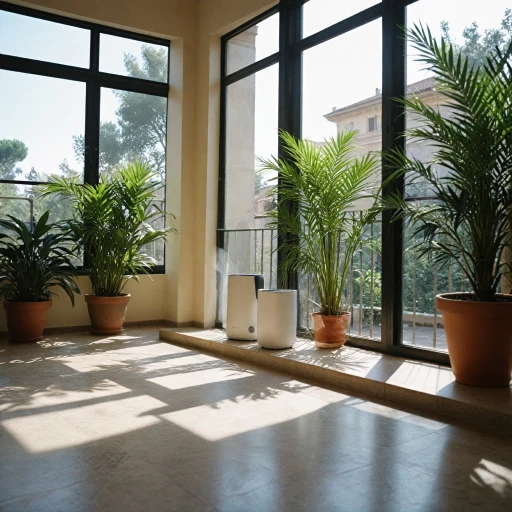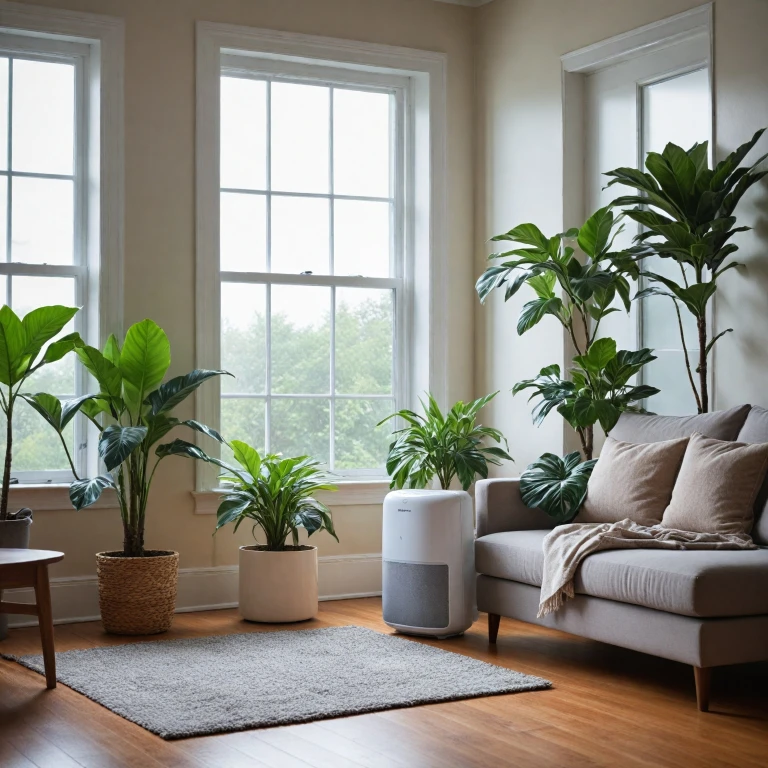What Are U15 Air Purifiers?
What Sets U15 Air Purifiers Apart
The air purification market is filled with a variety of models designed to enhance air quality. Among these, U15 air purifiers stand out due to their exceptional filtration capabilities. These purifiers, often used in high-efficiency cleanrooms, utilize ULPA filters, which are capable of capturing even the most minute airborne particles, making them ideal for environments where air quality is paramount.
U15 models filter the air with precision by removing at least 99.9995% of particles measuring 0.12 microns or larger. This level of efficiency surpasses that of standard HEPA filters, which typically capture 99.97% of particles as small as 0.3 microns. The higher efficiency classification of U15 ensures optimal particulate air filtration, making a significant difference in environments that demand the utmost in cleanliness, such as ISO-certified cleanrooms or specialized medical equipment facilities.
Whether you're looking to purify a small room or a larger commercial space, the flow of clean air generated by a U15 air purifier can dramatically improve overall air quality. This makes them a preferred choice for those who require the most rigorous filtration performance in their air purifiers.
While the high standards and capabilities of U15 air purifiers often come at a premium price, their reliability and performance justify the investment, especially in settings where air purity is non-negotiable. If you're curious about how these purifiers tackle specific pollutants, such as cigarette smoke, you may find it helpful to explore additional resources such as how air purifiers tackle cigarette smoke effectively.
The Science Behind U15 Filtration
Advanced Filtration Technology: Understanding U15 Mechanisms
U15 air purifiers represent the frontier of air quality management, employing a meticulous filtration approach. These purifiers are built around ULPA (Ultra-Low Particulate Air) filters, which stand out due to their capacity to capture minute airborne particles with remarkable precision. This level of proficiency is particularly advantageous in environments that demand pristine air, such as clean rooms and laboratories.
ULPA filters, the heart of U15 air purifiers, are engineered to filter out 99.9995% of particulate matter as small as 0.12 microns. This is a step beyond the high efficiency of HEPA (High-Efficiency Particulate Air) filters, which are known to remove particles of 0.3 microns with the same efficiency. It is this stringent filtration capability that forms the benchmark for U15 standards, ensuring cleaner and safer air in various settings.
The filtration process in U15 air purifiers involves multiple stages. Initially, air enters the purifier, where preliminary air filters capture larger particles such as dust and hair, thereby prolonging the lifespan of the subsequent filtration stages. Next, the air flows through the ULPA filter, where the fine particulates are meticulously trapped. This ensures an exceptional level of air purity, crucial for sensitive applications.
For more detailed insights on how advanced filtration technologies are utilized, including the benefits of UV air purification, you might consider reading
this article, which delves deeper into the nuances of UV integration in air purifiers.
In summary, the science behind U15 filtration is a testament to human ingenuity in air purification. Its ability to filter exceedingly small particles makes it a preferred choice in high-demand environments, and highlights the importance of choosing the right equipment for your specific needs. As you explore further, remember that every component, from filters to the purifier's design, contributes significantly to overall air quality and purification efficiency.
Health Benefits of Using U15 Air Purifiers
Boosting Health Through Air Purification
The integration of U15 air purifiers into living spaces brings a multitude of health benefits due to their advanced filtration capabilities. Unlike standard HEPA air filters, U15 filters boast the ability to capture up to 99.9995% of ultrafine particulate matter, down to a minuscule 0.1 microns. This high efficiency in capturing particles significantly enhances the quality of the air you breathe, ensuring that even the finest pollutant particles do not escape.
### Enhanced Air Quality
One of the primary health benefits of using U15 air purifiers is their exceptional ability to improve indoor air quality. By removing allergens, pathogens, and other airborne irritants, these purifiers help reduce the symptoms of respiratory conditions such as asthma or allergies. The clean room quality air achieved is especially beneficial in environments where air purity is crucial, such as hospitals or laboratories.
### Reducing Exposure to Harmful Particles
U15 filtration is particularly effective in removing smoke, dust, and pollen from the air, which are common offenders in compromising respiratory health. By substantially decreasing the presence of these pollutants, U15 air purifiers create a cleaner, safer environment. This reduction in particulate matter contributes to a lower risk of long-term health issues related to air pollution.
For more information on achieving optimal air quality, exploring the benefits of bulk activated charcoal for air purifiers can provide further insights. These activated charcoal solutions function in tandem with filters to adsorb harmful gases and enhance the purifier’s overall effectiveness.
### Applications in Medical and Sensitive Environments
U15 air purifiers are not just limited to residential or commercial use. They are integral in maintaining air quality in cleanrooms and other critical settings that require stringent particulate control. Whether it's used as part of cleanroom hepa systems or in conjunction with ulpa filters, such advanced purification equipment safeguards sensitive environments from contamination.
Incorporating a U15 air purifier into your space ensures a significant enhancement in air cleanliness and quality, addressing both general air purification needs and specific health-related concerns. With the best price options available, investing in a high-quality U15 model can be a cost-effective approach to protecting your health and well-being.
Factors to Consider When Choosing a U15 Air Purifier
Key Considerations When Selecting a U15 System
Choosing the right U15 air purifier entails understanding distinct factors to ensure optimal performance and value. By recognizing these elements, you can confidently invest in a purifier that meets your specific needs.
- Filtration Efficiency: U15 air purifiers boast advanced filtration capabilities, often necessary for environments like cleanrooms or laboratories where ultrafine particles compromise operations. Understanding the filtration efficiency in comparison to HEPA and ULPA standards is crucial. Consider the particulate air retention capabilities and filter specifications that help achieve high ISO air quality standards.
- Flow Rate: Assessing the air flow performance is vital to ensure your purifier swiftly recirculates and cleans the room air. The flow rate dictates how efficiently the air purifier will refresh the air in a given space, an essential metric in maintaining high air quality levels.
- Product Quality: Durability and construction materials determine the long-term functionality of your purifier. Evaluate the overall build of the equipment, including the hepa air filter and other components, ensuring they align with high-quality standards suitable for frequent use.
- Cost and Maintenance: While initial price is a factor, calculate the long-term expenses related to filter replacement and equipment upkeep. Finding the best price should encompass cost-effective maintenance plans, ensuring both performance and economic value are maximized.
- Intended Use: Define your specific requirements—whether for general air purification or specialized environments where true hepa standards are essential. Align the purifier's capabilities with the particulate and filtration needs of your space, be it a cleanroom, air shower, or ordinary room settings.
By contemplating these factors, you can enhance the efficiency and lifespan of your U15 air purifier, leading to healthier, cleaner air environments. This comprehensive understanding ensures a well-informed purchase, tailored to your operational needs and air purity goals.
Comparing U15 Air Purifiers with Other Models
U15 Air Purifiers: How They Measure Up
In the crowded market of air purification devices, selecting a model that suits your needs can be daunting. U15 air purifiers often come into consideration for environments that demand advanced cleaning, but how exactly do they compare to other types? Let's break it down.
- Filtration Capability: U15 air purifiers utilize ultra-low penetration air (ULPA) filters, going a step beyond traditional HEPA filters in capturing smaller particulate matters. ULPA filtration is crucial in cleanroom environments where high efficiency and cleanliness are paramount.
- Performance in Clean Rooms: When pitted against regular air purifiers equipped with HEPA filters, U15 models demonstrate superior performance in clean room scenarios, thanks to their ability to remove the most minute particles. While HEPA filters capture 99.97% of particles as small as 0.3 microns, U15 filters excel in environments requiring even stricter air quality control.
- Cost Consideration: The advanced filtration capability of U15 purifiers undoubtedly comes at a premium. Their price typically exceeds that of standard air purifiers. However, the investment might be justified by the unique needs of your environment, especially in settings like hospitals or laboratories where air quality is non-negotiable.
- Airflow and Noise Level: U15 purifiers are designed to maintain high airflow while filtering tiny particles. However, achieving high efficiency may sometimes result in higher noise levels. This is an essential factor when considering them for residential spaces.
- Maintenance and Lifespan: Regular maintenance of U15 air purifiers is crucial to preserve their filtration efficiency. While the filters are high quality, they may require frequent replacing depending on the air purity demand, adding to the overall cost of ownership.
Choosing the right air purifier depends heavily on your specific requirements. Today's market offers a plethora of products, each with unique features designed to cater to varied needs. The decision between opting for a U15 air purifier or a standard HEPA model should factor in the environment, necessary air quality, and budget constraints. By understanding these elements, you ensure that you select the right equipment to maintain optimal indoor air quality.
Tips for Maximizing the Efficiency of Your U15 Air Purifier
Optimizing Your U15 Air Purifier's Performance
To ensure that your U15 air filter operates at peak efficiency, there are several best practices to consider. Employing these strategies can help maximize the performance of this sophisticated air purification equipment. Here are some tips:
- Regular Maintenance: Just like any high-performance device, your U15 air purifier requires regular maintenance. Check the HEPA filters periodically for any blockages caused by particulate air or other particles. Replacing the filter when necessary can keep the air quality in your cleanroom or living spaces at optimal levels.
- Proper Placement: Where you place your air purifier can significantly impact its performance. Situate the purifier in an area with good airflow, away from walls or furniture that can block the air flow. Consider the size of the room where it's used to ensure the purifier's capacity matches the room's requirements.
- Monitor Air Quality: Use an air quality monitor to measure particulate levels in your environment. This equipment helps determine when additional filtration efforts are needed, such as increasing the air purifier's flow rate during high pollution periods or in clean rooms demanding clean environments.
- Energy Efficiency: While it might be tempting to operate the air purifier at the highest setting, adjusting the fan speed according to the room's air quality can save energy and extend the HEPA filter's lifespan.
- Consider Additional air purifiers: If your environment has specific needs, it might be beneficial to use multiple purifiers or combine different technologies. Diversifying filtration techniques can enhance overall air purification.
Remember, taking these steps not only helps in ensuring high efficiency but can also make it easier to maintain the purifier at the best price possible due to reduced wear and tear on the air filters and overall product. Implementing these practices guarantees that your investment in a U15 air purifier is well justified, providing clean, healthy air consistently.

